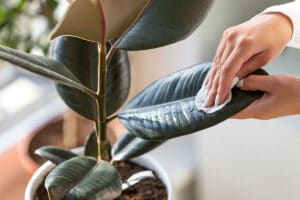A healthy lawn is the foundation of most landscaping in Quebec. Beyond its undeniable environmental role in soil retention and rainwater management, a lush, green lawn enhances colorful flower beds and other elements of your outdoor decor. In urban settings, lawns are vital plants that deserve our attention.
Main lawn care
To keep your lawn in excellent condition—durable AND sustainable, meaning not visually perfect but ecologically sound—you must provide certain care throughout the year:
- Mow Regularly: Keep the grass at a height of 8 cm during the entire growing season. While 8 cm may seem tall, this height is ideal for deep rooting and resilience.
- Fertilize: Use quality fertilizer, whether natural or synthetic, at various times of the year. Splitting fertilization into 3 or 4 applications allows the lawn to absorb nutrients at the right times and in optimal amounts for its health.
- Water as Needed: Lawns require about 2.5 cm of water per week to thrive. If rainfall is insufficient, water deeply and less frequently, ideally early in the morning or according to your municipal regulations.
- Monitor Changes: Stay vigilant about any changes in your lawn. By being attentive, you can react quickly and take the necessary steps to prevent significant or even permanent damage.
To learn everything about sustainable lawn and how to care for it, visit pelousedurable.quebecvert.com
Repairing Damaged Lawn Patches: A Crucial Step!
Various conditions can affect your lawn: heat, drought, insects, harsh winters, frost, animals, etc. It’s common to see yellow, dry, or bare patches on the lawn. After identifying and addressing the cause [this article can help you identify the cause], one step is often overlooked: repair.
Bare soil and sparse grass create opportunities for insects and weeds. Always remember that insect eggs and weed seeds need to be in contact with the soil to hatch or germinate. Leaving damaged patches as they are is a serious mistake. Repairing your lawn is essential if you want it to remain dense, green, and healthy.
Steps for Lawn Repair
Repairing damaged lawn patches is actually quite simple. Ideally, this work should be done in spring or fall, when temperatures and soil conditions are ideal for germination.
- Use a rake to scratch the surface and remove dead or dry grass.
- Add a thin layer of lawn soil, about 1.5 cm.
- Cover the area with quality grass seed.
- Using a leaf rake, gently mix the seeds with the soil to ensure better contact, or cover with a thin layer of soil.
- Water and ensure the soil remains moist but not soggy for the two weeks following seeding.
By promptly repairing damaged areas of your lawn, you will limit the spread of weeds and insect infestations. Visit our branches in Laval and Brossard to get everything you need for a beautiful, dense, and healthy lawn!







